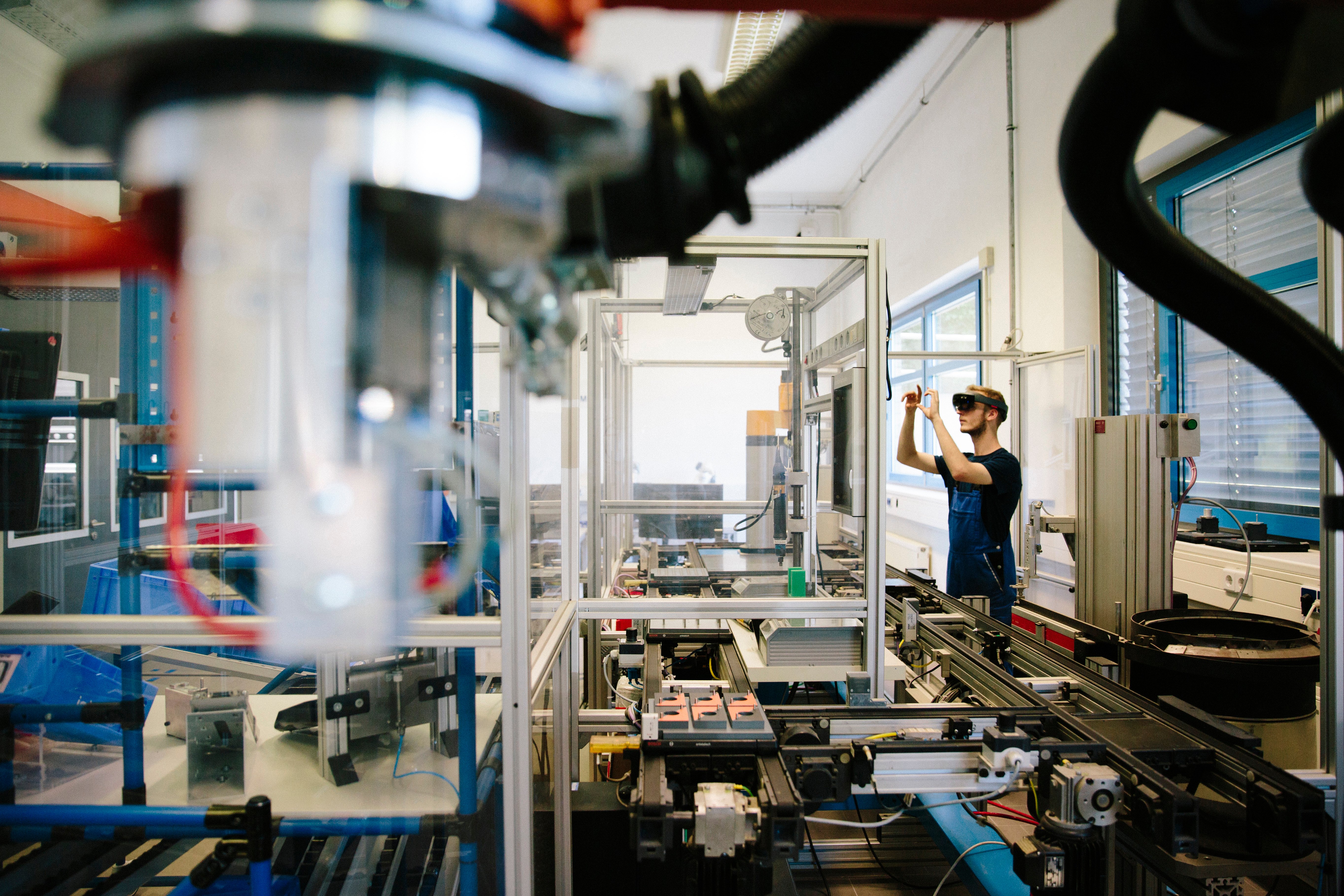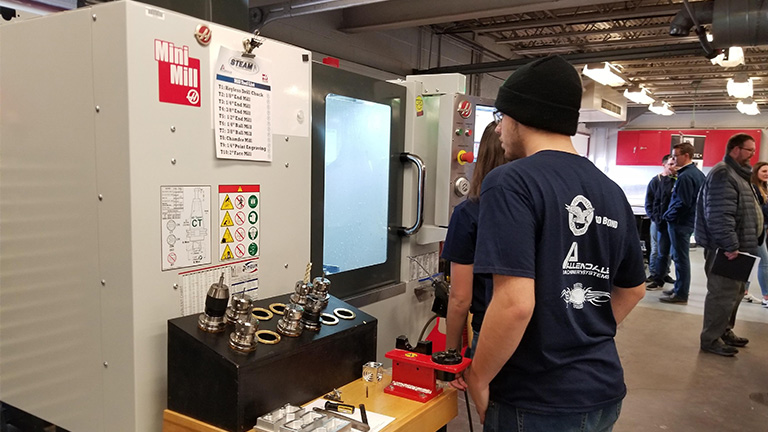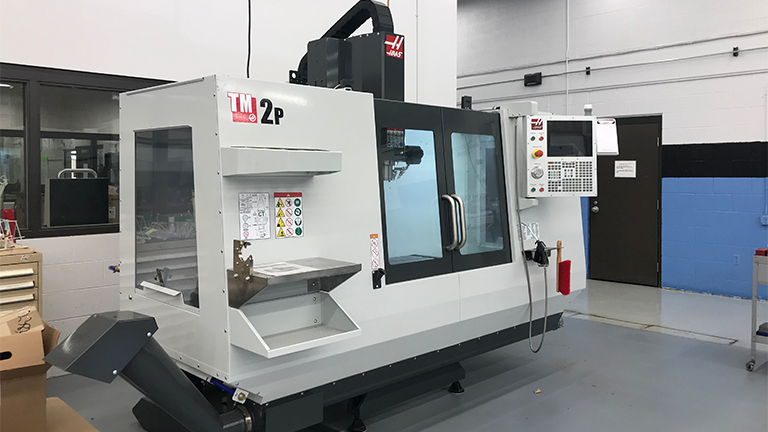 Misperceptions surround the manufacturing industry. Leading the list of misperceptions is that manufacturing is a low-tech field and only makes up a shrinking slice of the U.S. economy and is the epitome of a blue-collar job.
Misperceptions surround the manufacturing industry. Leading the list of misperceptions is that manufacturing is a low-tech field and only makes up a shrinking slice of the U.S. economy and is the epitome of a blue-collar job.
On the contrary, when we looked at industry data we saw that manufacturing industry 4.0 is a high-tech field that offers many automation job opportunities in a today's smart factory setting. The industry has had a fairly constant share of real gross domestic product (GDP) since the 1940s, and is in fact a new-collar job that requires a mix of blue- and white-collar skills.
What Is Industry 4.0?
According to Forbes.com contributor Tony Uphoff, it’s the convergence of traditional industrial products and services with the advanced digital technologies of cloud and mobile computing, sensors and the Industrial Internet of Things. A few examples of industry 4 technology available today include 3D scanning, augmented reality and wearable devices.
Another Forbes.com contributor, Bernard Marr, offers a more detailed description:
“We’re in the midst of a significant transformation regarding the way we produce products thanks to the digitization of manufacturing. This transition is so compelling that it is being called Industry 4.0 to represent the fourth revolution that has occurred in manufacturing. "
"From the first industrial revolution (mechanization through water and steam power) to the mass production and assembly lines using electricity in the second, the fourth industrial revolution will take what was started in the third with the adoption of computers and automation and enhance it with smart and autonomous systems fueled by data and machine learning.”
Industry 4.0 technology will likely impact workers in many ways. One of them is to improve workers’ jobs and simplify their tasks. Another is to create a human-machine partnership that takes advantage of the intrinsic strengths of people and advanced technologies to obtain a better outcome than either could accomplish alone. Yet another is to generate totally new job roles — roles in which people may be increasingly called upon to exercise human traits such as communication, empathy, intuition and the ability to review, interpret or question data.
 Indeed, as machines begin to take on more types of work that they can do more quickly and easily than humans — such as finding patterns, identifying and resolving production constraints in a supply plan, proactively linking situations with predicted needs, and creating the right order forms at the right time — next generation manufacturing workers could similarly shift toward those areas where they hold the comparative advantage in skills.
Indeed, as machines begin to take on more types of work that they can do more quickly and easily than humans — such as finding patterns, identifying and resolving production constraints in a supply plan, proactively linking situations with predicted needs, and creating the right order forms at the right time — next generation manufacturing workers could similarly shift toward those areas where they hold the comparative advantage in skills.
According to a Deloitte report on the digital supply network (DSN), roles in logistics, procurement, supply chain management, production planning and demand planning may see the greatest evolution. As emphasis in the supply network moves from push to pull and from transactions to relationships, job roles would similarly change from being task-oriented to stretching end-to-end across the supply chain.
Managing Challenges
For instance, let’s look at the challenge of keeping production lines running. According to the aforementioned Deloitte report, if it takes a supplier 30 days to produce and ship a certain type of part, a manufacturer who needs the part can use sensors to detect inventory levels and automatically reorder the part on a continuous, real-time basis.
Not only can this system create a more robust, reliable supply chain, it can also free up next generation manufacturing workers — who previously had to physically check parts inventory levels and fill out order forms for products — to move on to new, value-added, relationship-centric roles.
Rather than focusing on one vendor, they can maintain relationships with multiple suppliers, routing orders to a more diverse network of vendors depending upon capacity — in the process creating more business for suppliers and optimizing efficiency. In this way, workers can use their uniquely human skills to increase speed, accuracy and individualized service in their interactions with suppliers and customers. No longer focused purely on operational efficiency, these workers can instead look for opportunities to achieve broader business goals such as attracting new customers and processing recurring orders while improving productivity.
Additionally, as organizations adopt new DSN-driven technologies, demand may increase for some types of current job roles. Yet they may not have an existing training curriculum developed to instruct employees. With the rapid pace of technological change, keeping training courses up-to-date can become a monumental task.
Preparing the Manufacturing Workforce
 That’s where the SME Education Foundation and PRIME (Partnership Response In Manufacturing Education) school initiative can help. SME PRIME helps close the current and impending skills gap by partnering with industry to directly enhance manufacturing and engineering talent in high schools across the nation. As part of that, PRIME provides manufacturing equipment, curriculum, materials and supplies, scholarships, camps and academies, student and school credentialing, professional development, marketing and communications, extracurricular programs and industry events such as Manufacturing Day and SME conferences and trade events.
That’s where the SME Education Foundation and PRIME (Partnership Response In Manufacturing Education) school initiative can help. SME PRIME helps close the current and impending skills gap by partnering with industry to directly enhance manufacturing and engineering talent in high schools across the nation. As part of that, PRIME provides manufacturing equipment, curriculum, materials and supplies, scholarships, camps and academies, student and school credentialing, professional development, marketing and communications, extracurricular programs and industry events such as Manufacturing Day and SME conferences and trade events.

